Rabbenu Tam and the Silver Talons
Is falconry kosher?
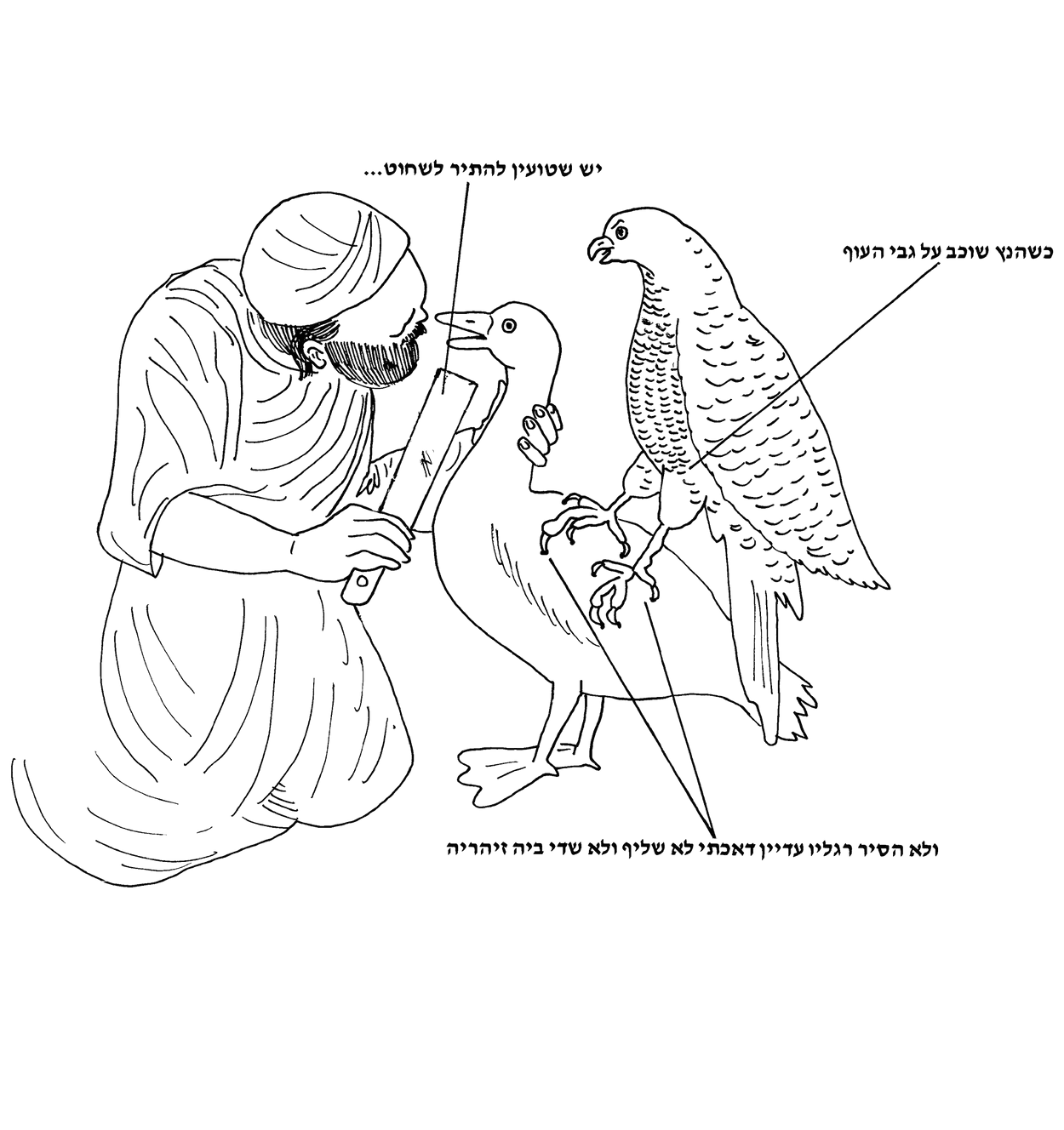
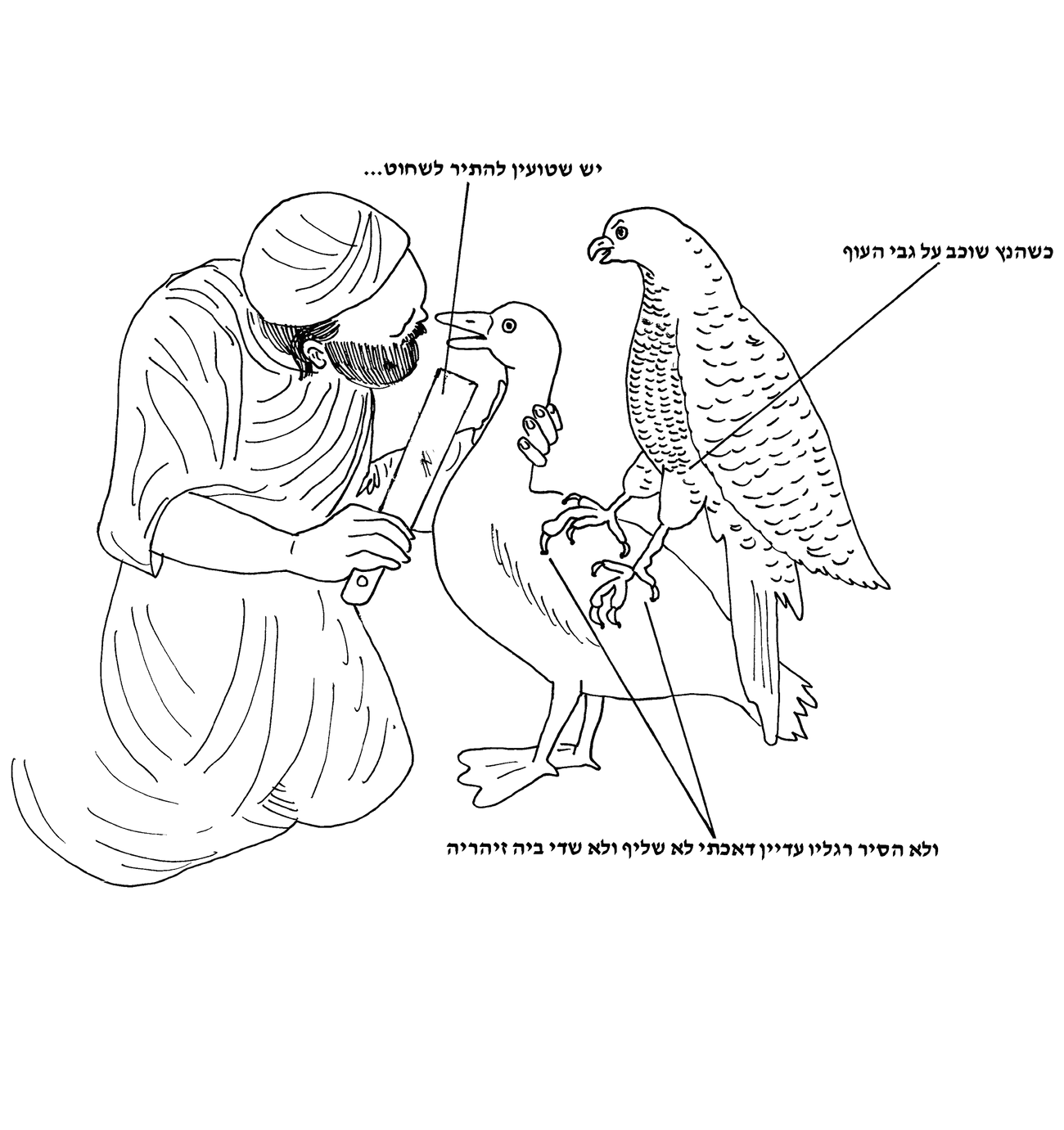


The house of Rabbi Ishmael taught that when the Israelites left Egypt they were comparable to a dove that fled from a hawk and entered a small hole in a rock and found a snake’s nest. She could not enter any further because the snake was there, and she could not turn around for the hawk was waiting outside. What did the dove do? She began crying out and flapping her wings so that the owner of her birdhouse would come and rescue her. -Canticles Rabbah 2, 2
According to the Sages, everything is found in the Torah. However, falconry, hunting with the aid of trained birds of prey, is probably one of the topics one would least expect to find in Talmudic literature and argued about in the beit midrash. The scattered sources have been distanced from the modern gaze by a wide dark chasm of ignorance regarding “primitive” hunting techniques. Interpreting medieval rabbinic sources related to hawking requires an interdisciplinary approach. I swooped down on the topic with a synergetic blend of traditional rabbinic study, Jewish history, general history, the history and modern practice of hunting and falconry, zoology, and medieval art.
Hawking is a method of hunting, which utilizes captive trained predatory hawks. It is often referred to as “falconry,” although hawks and falcons are distinct species. Falconry was developed in ancient times somewhere in the East—the precise time and location lost in the mists of ancient Eastern preliterate prehistory. Apparently, it was relatively unknown to the ancient Greeks and Romans, who did not practice it.
Falconry continued to develop in the Persian Empire, where Babylonian Jews became acquainted with it. The practice spread independently both to Arabia and westward into Europe. Falconry reached an apex in the Middle Ages and Renaissance periods, particularly in France, but in the modern era, it was displaced to a great extent by the use of firearms. The present article explores the medieval Jewish knowledge of, and especially the exploitation of this technique, centered in 12th-century Northern France in the communities surrounding the great master Tosafist, Rabbenu Tam.
Rabbi Jacob ben Meir Tam (Rabbenu Tam, ca. 1100-1171) was a towering figure of medieval French Jewry, probably the dominant personality of the era. The grandson of the preeminent commentator Rabbi Shlomo Yitzhaki (Rashi, ca. 1040-1105), he also wrote on grammar, and composed a piyyut (Hebrew “liturgical” poetry) describing the traditional (masoretic) punctuation and cantillation marks of the Hebrew Bible. Rabbenu Tam first expressed the central principle of textual criticism, which many hundreds of years later was termed lectio dificilior potior. He was the primary force behind an entire legal school of Tosafists, which branched out over all of Jewish Europe and whose legal opinions appear on the page of virtually every edition of the printed Talmud. Surprisingly, Rabbenu Tam is associated with hawking:
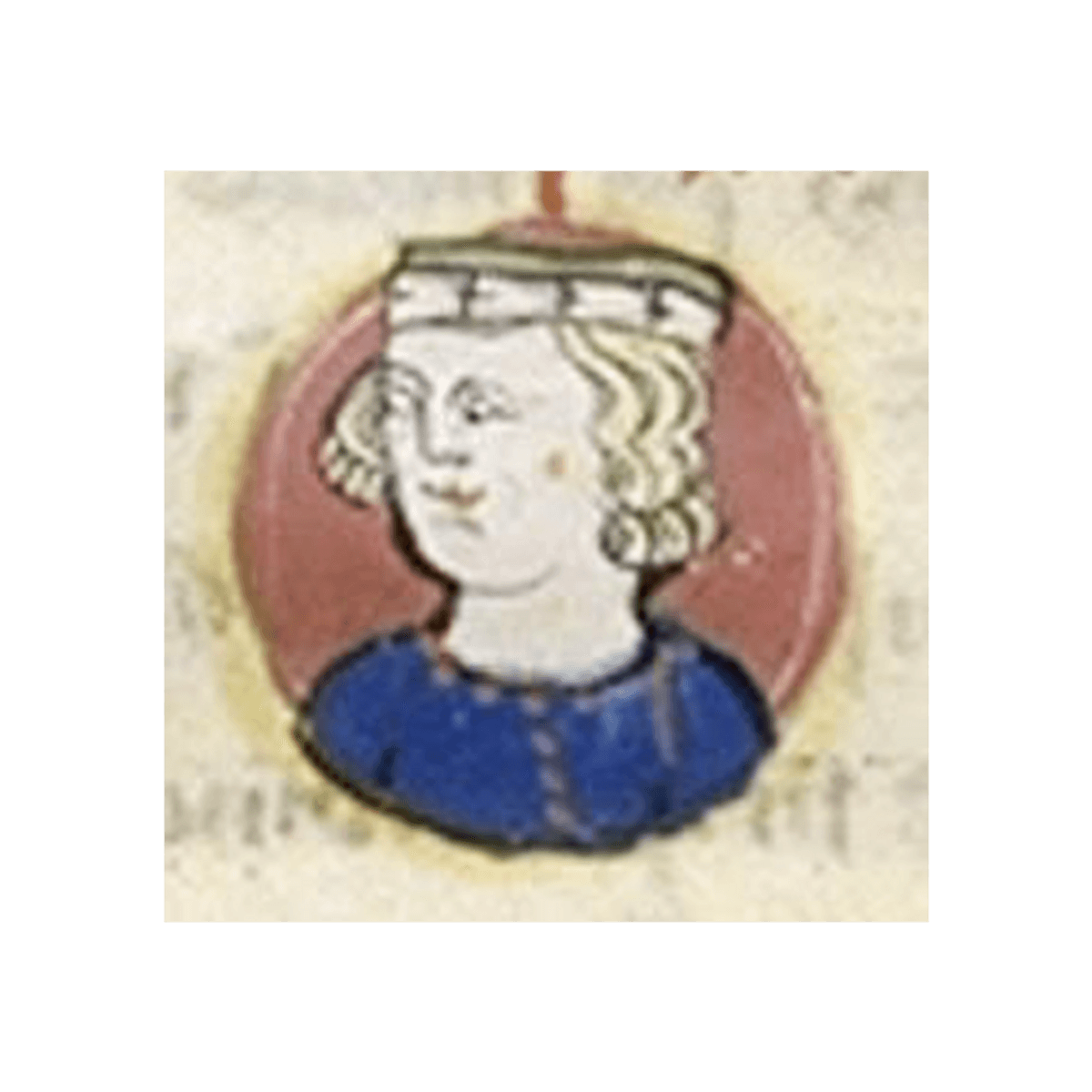
Rabbenu Asher, of blessed memory, wrote in his Tosafot that he received a tradition that Rabbenu Tam would put talons of silver on his hawk, like shoes, when he wanted to eat what it trapped.
So states Rav Betzalel Ashkenazi (ca. 1520–ca. 1592) in his monumental Shita Mekubetzet. An illuminating article by Avraham Reiner, now published in his new book on Rabbenu Tam, describes three delicate questions in biblical interpretation which Henri I (known as a very devout Christian) asked of Rabbenu Tam, and the favorably received responses.
Reiner reports that the aforementioned quote from Shita Mekubetzet was cited to him by Simha Emanuel, as proof of Rabbenu Tam’s exemplification of some rather surprisingly “French” hunting practices. It seems particularly appropriate to quote the French translation of Reiner’s conclusion:
Rabbénu Tam avait-il l’habitude de chasser, selon la coutume des nobles de France? Il me semble difficile de mettre en doute l’authenticité de cette description qui, selon notre point de vue montre que Rabbénu Tam était mêlé, plus que nous ne l’avions soupçonné jusqu’à présent, à la vie française et champenoise!
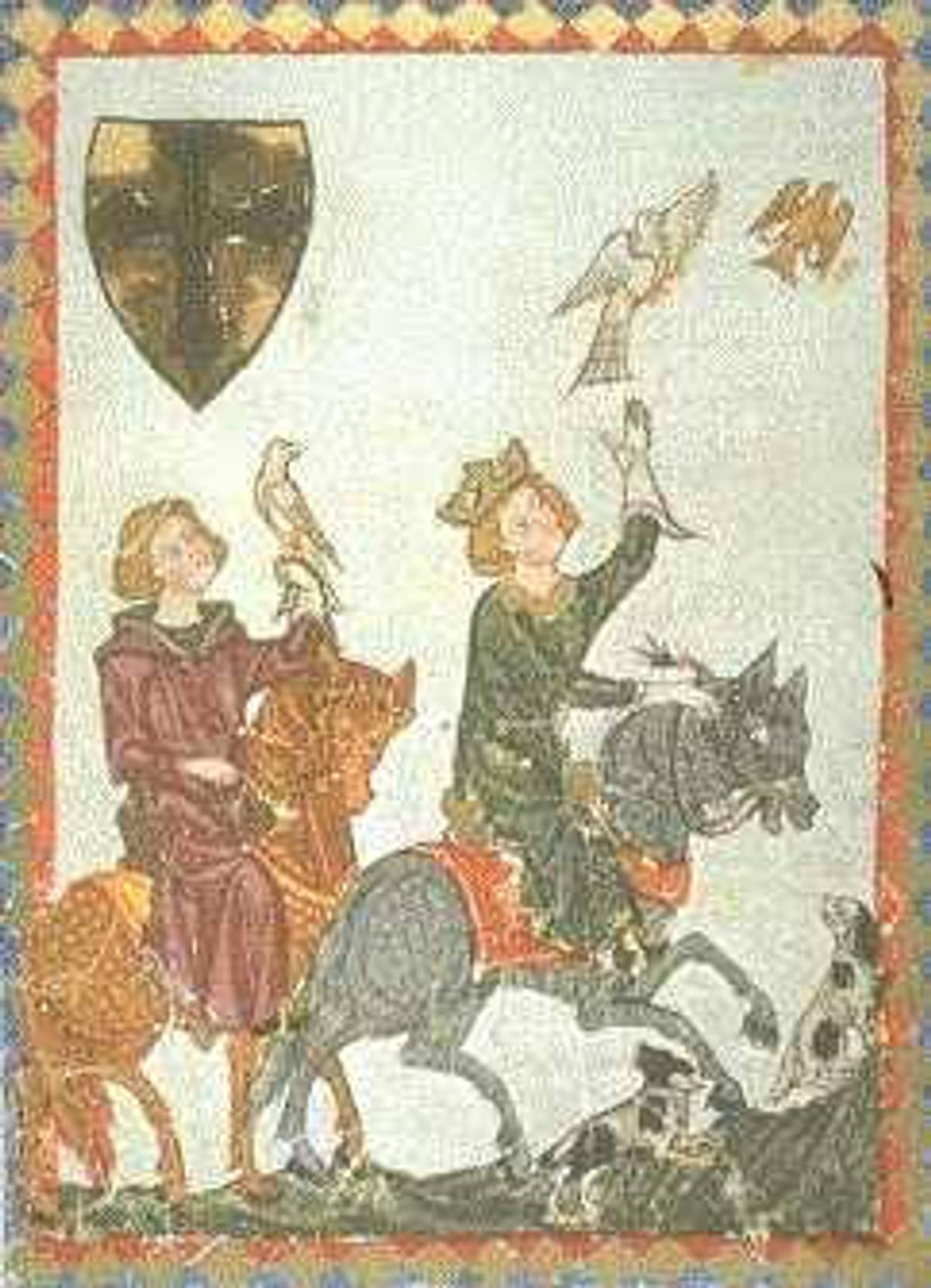
This source, attributed to Rabbenu Asher (Rosh) by Rabbi Betzalel Ashkenazi, states that Rabbenu Tam himself practiced hawking. It seems quite likely that Rabbenu Tam was, in fact, more of a “Frenchman” than we may have realized, but it would be premature to accept this source as historical fact. Indeed, as Reiner states, it would be difficult to impeach the authenticity of such a statement stemming from Rabbenu Asher, even if the temporal separation of 150 years, and the geographic and linguistic distance between Tsarfat and Ashkenaz (or Sefarad) do leave some room for doubt. However, after analysis of the manuscript sources, it seems highly unlikely that the Rosh himself actually wrote these words. A number of factors lead to this conclusion—even if none of them alone is more than a cause of doubt.
First of all, if this tradition, with its legal ramifications in terms of kashrut, was transmitted by the Rosh, we would hope for some mention of it in his other writings, or at least in the famous codex by his son Jacob, Arba’ah Turim, also known as the Tur. Even though not all Halachic opinions discussed by Rosh are found in Piskei Ha-Rosh and Tur, this one attributed to Rabbenu Tam is conspicuous in its absence.
More directly, this section itself does not appear in any of the four known manuscripts of Rabbenu Asher’s own Tosafot on Tractate Hullin. In the introduction to the recent critical edition of Rabbenu Asher’s Tosafot on Tractate Hullin, Rabbi Eliyahu Lichtenstein states that some of the citations of the Tosafot Ha-Rosh in Shita Mekubetzet may have originated from a later editor and not from Rabbenu Asher himself. Much evidence supports his general hypothesis in the present specific case.
Shita Mekubetzet also records there, in an adjacent reference, that Rabbi Perez ben Elijah of Corbeil (Rabbenu Peretz died ca. 1298), a noted French Tosafist and student of Rabbenu Yehiel of Paris, attributes to Rabbi Isaac of Norwich (who will be discussed later) a practice seemingly identical to that credited to Rabbenu Tam:
Similarly, Rabbenu Peretz, of blessed memory, wrote in his Tosafot that: ‘Rabbi Isaac of Norwich from the Land of the Island [England] would do so [as follows]: His hawk, which is called esparviere, would have its feet covered and put silver on its talons while hunting fowl, lest it inject venom. This is the proper procedure (halakha l’ma’ase).’ Until here [I have quoted verbatim the words of Rabbenu Peretz].
The attribution may be considered highly reliable. No parallel is available, as Rabbenu Peretz’s writings on this tractate are not extant, and are known to us only through Shita Mekubetzet as well as other secondary sources who cite this lost work. The two attributions of this practice of utilizing silver talons appear virtually side by side in Shita Mekubetzet. I suggest that this one is the original and not the attribution to Rabbenu Tam. Even if we were to accept that the Ashkenazi/Sephardi Rabbenu Asher himself wrote this particular Tosafot, despite the considerable evidence that he didn’t, the French Rabbenu Peretz would remain a much more reliable source for identifying the French sage who constructed talon covers.
The only other medieval source that I have encountered which mentions talon covers is Rabbi Menachem, son of the martyr Aaron, son of Zerah, in his primarily legal work Tzedah La-Derech. Rabbi Menachem was born in 1310, in Navarre, probably in the town of Estelle, the son of refugees from Philip the Fair’s great French expulsion of 1306. His own parents were murdered, along with several thousand other Jews, during the persecutions of 1328 in Navarre. He himself was reportedly severely beaten and left for dead, but subsequently saved by a righteous gentile neighbor. Rabbi Menachem studied in the yeshiva of Toledo, under Rabbenu Yehuda ben Asher (son of Rosh), and in Alcalá (de Henares), where he was eventually appointed chief rabbi in 1361.
The introduction to Tzedah La-Derech states that between the years 1350 and 1368 he studied Talmud in Alcalá with the Tosafot of Rabbenu Peretz “continuously, day and night” along with his study partner, the former Rabbi of Alcalá. That is the only time in the entire work that Rabbenu Peretz is mentioned by name; thus, it would be safe to assume that after 18 years of Talmud study utilizing his Tosafot, that opinions and traditions found in those Tosafot must be well represented in Rabbi Menachem’s opus. I propose that those Tosafot of Rabbenu Peretz are themselves the direct source of the ruling found in Tzedah La-Derech, with not only the name of the Tosafot omitted by Rabbi Menachem, but also that of the enigmatic Rabbi Isaac of Norwich, the most probable originator of the silver talon covers. The name of Rabbenu Tam would less readily be omitted, due to the authority which it wields.
A scholar/scribe eventually mentioned the practice of silver talon covers in a gloss to his copy of Rabbenu Asher’s Tosafot. (The text of this very manuscript, or a copy of it, was reproduced by the Spanish Rabbi Betzalel Ashkenazi in his Shita Mekubetzet and the original manuscript was later lost.) Toledo or its vicinity seems the most likely location for this addition, the intersection of Tosafot by Rabbenu Peretz, Tzedah La-Derech, and Tosafot Ha-Rosh, and the fermentation ground for the Shita. This gloss may have been quoted and adapted directly from the Tosafot by Rabbenu Peretz, although the possibility of influence from the work Tzedah La-Derech should not be discounted. The lack of an attribution in Tzedah La-Derech may be a crucial intermediate step in the eventual mistaken attribution. In Spain, the perceived distinctly “French” practice was ascribed to the prominent French Rabbenu Tam. It makes little difference if the silver talon covers may have technically originated in the French “satellite” of Angleterre, the Sephardi eye justifiably saw France, probably in all things associated with hawking. Furthermore, the construction of silver talon covers itself clearly indicates great personal wealth, an additional factor which may have suggested Rabbenu Tam to the Spanish scribe.
It should be noted that the appearance of two identical traditions side by side with different attributions is a common phenomenon in the earlier rabbinic Talmudic corpus. Our catchall compendium Shita Mekubetzet could provide a later model for some of those earlier parallels, as well as itself being understood according to critical scholarly methods already applied to the more nebulous Talmudic examples.
The issue regarding Talmudic literature has been methodically addressed by Shamma Friedman. The first question to ask is whether we are discussing two actual historical events, two ancient traditions regarding one historical event, or one event with an earlier version closer to the historical truth and a later, edited and adjusted version. The first model is characteristic of traditional rabbinic scholarship (and therefore not even discussed by Friedman); the second possibility of two ancient parallel accounts is adopted by many modern scholars and endearingly referred to by Friedman as zakhor v’shamor.
The third possibility, which Friedman champions in general, he refers to as parashah shenithadesh bah davar. He explains:
Similar but differing texts do not spring into existence in primeval twinship. Changes come about developmentally and usually editorially, and their effects can be recognized in terms of a wide range of well-known literary and stylistic categories, which are far from unique to our corpus.
This approach is more fruitful in evaluating our parallel between Rabbenu Tam and Rabbi Isaac of Norwich. Elsewhere, Friedman explains that the general tendency in Talmudic and other parallels is to shift over time toward the more famous (and authoritative) person and familiar place names. In this case, that would clearly be Rabbenu Tam, as opposed to Rabbi Isaac of Norwich, a relative unknown.
An additional factor obviating the attribution of the silver talon covers to Rabbenu Tam himself, is the absence of any mention of it in Sepher Ha-Teruma, by Rabbi Baruch ben Rabbi Isaac (ca. 1140-), a student and associate of Rabbenu Issac of Dampierre, nephew and successor of Rabbenu Tam. On the contrary, Sepher Ha-Teruma explicitly takes a lenient stance, which is much more likely to reflect Rabbenu Tam’s own legal opinion than the stringent view, which probably led to the manufacture of the silver talon covers.
Before elaborating on this point, and explaining the opinion of the Sepher Ha-Teruma, the Jewish legal rationale for the manufacture of silver talon covers requires some background explanation.
Exodus 22:30 states: “And ye shall be holy men unto me: neither shall ye eat [any] flesh [that is] torn of beasts in the field; ye shall cast it to the dogs.” According to traditional rabbinic interpretation, any animal which has been sufficiently mauled (Mishna Hullin 3, 1) by specific predators, or has had certain of its vital organs damaged (Mishna Hullin 3, 3), is rendered unfit for consumption—treyf in the original Hebrew of the verse—even if it was subsequently slaughtered according to legal procedures. The Babylonian Talmud (Hullin 53a) explains that this disqualification of mauling is due to venom, which is released via the claws or talons and subsequently causes the puncturing of internal organs (Rashi, Hullin 53b) or death (Tosafot, Hullin 42a). The fact that this understanding appears to contradict our modern scientific understanding of animal physiology has long been the topic of much debate.
Thus, any fowl mauled by a large raptor, such as a hawk or a falcon, is disqualified from consumption under Jewish law as treyf. However, the Mishna states that a netz (interpreted by Rashi and most interpreters as a small raptor, such as an esparviere, a sparrow hawk) only produces enough venom to disqualify small fowl such as a dove, but not larger fowl, such as a duck, goose, or chicken. Its relative ease of availability and affordability likely account for the fact that the sparrow hawk is probably the most commonly mentioned bird of prey in medieval Hebrew sources discussing falconry or kashrut.
Furthermore, the Babylonian Talmud understands that this venom is released upon the withdrawal of the talons or claws, not upon their application. Thus, if the prey is ritually slaughtered while still in the clutches of even a large predator, the fowl is permitted. This leniency is endorsed cautiously, and appears to have been relied upon in practice by some French Jewish communities, as the decision is codified in the early French liturgical and legal compendium, Mahzor Vitri, and later Tosafot (Hullin 53a) refers to them as a living actuality: “There are those who err in permitting…” The procedure, as discussed by Tosafot, is depicted here by Rabbi Amitai Ben-David in his comprehensive illustrated Sihat Hulin:
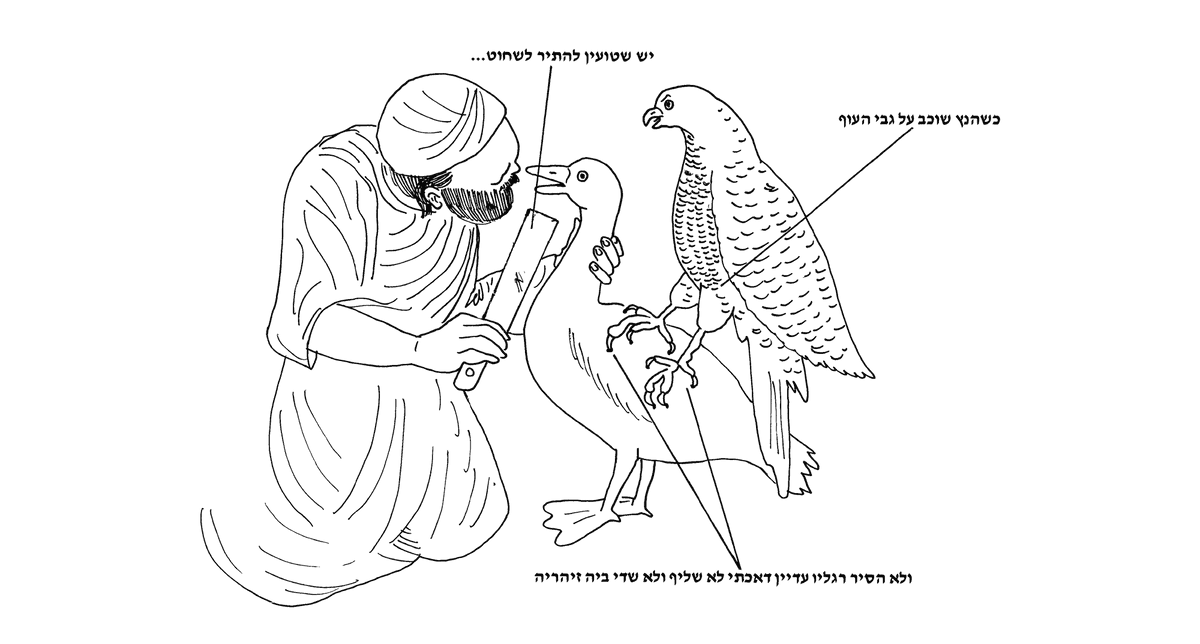
However, this practice was not endorsed by the Tosafot and all subsequent legal authorities. The reason stated is that although the practice is absolutely permitted from a technical standpoint, in fact implicit in the anonymous later strata of the Talmud—a fact which in and of itself, strongly suggests Jewish falconry in the East, as already assumed by the falconry historian Hans Epstein in “The Origin and Earliest History of Falconry,” Isis, Vol. 34, No. 6, Autumn, 1943. Tosafot state:
It should not be actually relied upon, as the raptor usually strikes repeatedly, and will thus release its grip (injecting the venom) and reattach itself, without the owner necessarily perceiving this.
Dr. Nick Fox, a conservation biologist specializing in raptors and falconry, wrote in a communication dated June 13, 2011:
Occasionally a raptor will strike prey a passing blow, but normally, once it has got the prey in its claws, it never lets it go, not if it can help it. It will hang on to the prey and if unattended will kill it, pluck it and eat it. But the falconer hastens to the spot and if the prey is not yet dead, kills it himself. So that is the norm.
Andrew Knowles-Brown, an expert English falconer and hawk breeder, estimated in a private communication dated June 12, 2011, that approximately 75% of hawk kills of bird prey are accomplished without the hawk ever releasing its talons. Nick Fox wrote in Understanding the Bird of Prey:
When the muscles contract, the foot closes tightly. The tendons slide in grooves in the underside of the toe bones and are held in place by tough sheaths. The sheaths are lined with fine ridges rather like the grooves of a fingerprint and engage with rough ridges on the tendons themselves (figure 1.17.2). When the foot tightens, these ridges lock together like a ratchet mechanism on a handbrake. Possibly, you will have noticed a stiff, jerky, creaky effect when loosening the grip of a live hawk; this is the ratchet being forcibly overridden. The ratchet has two useful purposes for the hawk: It enables it to “lock” its foot closed on a branch while sleeping, and it means that once it has got a tight grip on its prey, it does not require much muscular effort … Of course, the ratchet, like so many devices, is subject to technical hitches; not a few ospreys have drowned by being unable to unlock from an oversized fish.
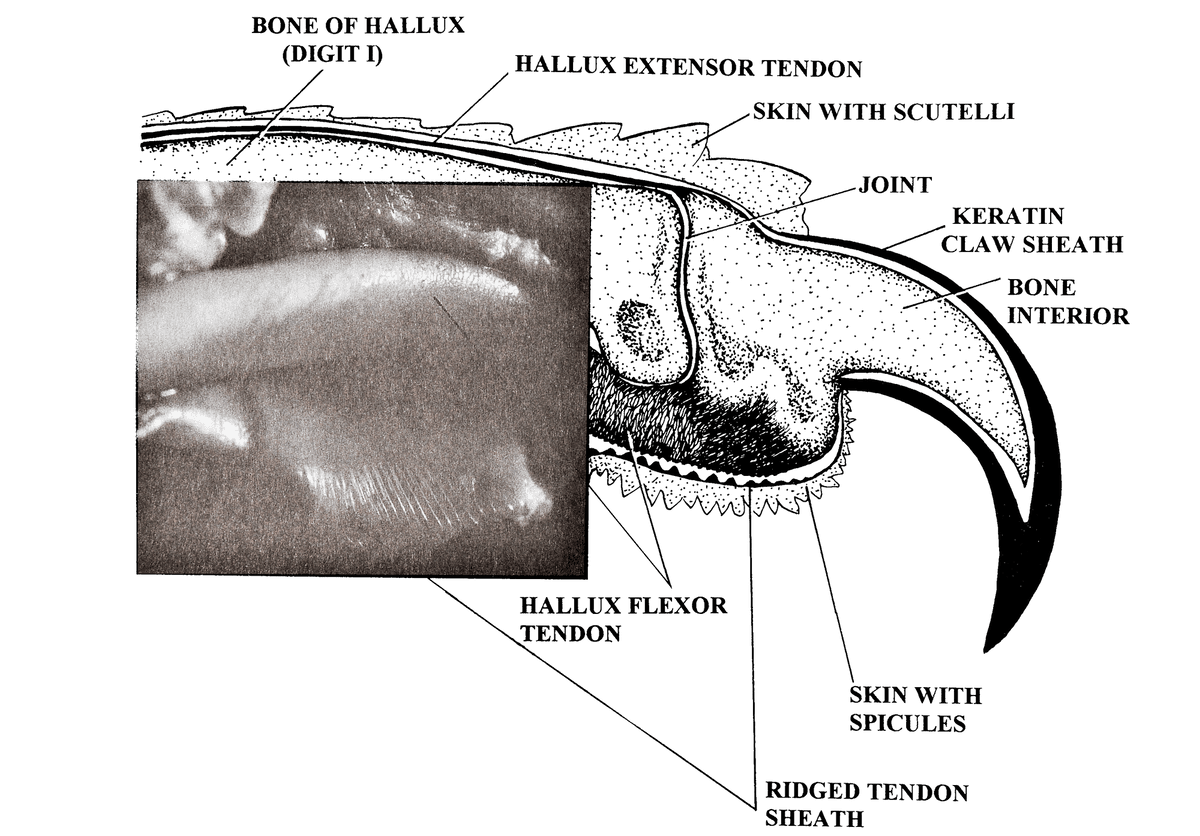
The falcon, on the other hand, kills through high-speed airstrikes with its talons, or, after seizing the prey with its talons, by severing the spinal cord with a special notch in its mandible, referred to as the tomial tooth. Indeed, the “killer falcon” seems much less suited for Jewish use than the hawk, and although all early descriptions of species are somewhat ambiguous, medieval Jewish sources almost invariably seem to refer to hawks, rather than falcons. The smaller esparviere, the sparrow hawk, can catch small birds, such as doves, and the larger astor, the goshawk, may trap larger fowl, such as geese. Thus, this article is primarily concerned with “Hawking” rather than “Falconry.”
So what accounts for “our” Tosafot rejecting the Talmudic assumption underlying the leniency of the Sepher Ha-Teruma? One may argue that this is merely an example of a tendency toward stringency of later authorities, here with the later Tosafot no longer accepting the leniency of assuming that the hawk never released its grip, despite it covering an estimated 75% of the cases. However, it seems as though Tosafot is describing “a different bird” than Sefer Ha-Teruma is, one which he claims “strikes several times with its talons” in the act of trapping the fowl. This is not the practice of the hawk, which, as we have seen, usually does not release its first grip on its prey. In other words, the descriptions of raptor predatory realities offered by Sepher Ha-Teruma and Tosafot diverge dramatically.
In my opinion, the most likely explanation is that our Tosafot is describing the hunting behavior of the falcon in particular, rather than that of the hawk. This medieval sage probably viewed the sport of falconry as a spectator and, not distinguishing between the falcon and the hawk, projected his impressions on all predatory raptors. In contrast, the lenient practice of the Sepher Ha-Teruma reflects an actual Jewish practice of hunting specifically with hawks in particular, not falcons.
In any case, a Jewish hawker may be motivated to manufacture silver talons as a stringency, which would remove any shadow of doubt regarding possible transmission of perceived venom through the talons of the hawk. However, according to this view of the Tosafot, that raptors generally strike repeatedly, they would be an absolute requirement for any Jewish practice of hawking to obtain kosher fowl. Although Shita Mekubetzet on Tractate Hullin was only relatively recently discovered (and could thus be marginalized by many traditionalists as a practical legal source), and the mainstream authorities of Tur/Beit Yosef, and Shulhan Aruch and its commentators, were apparently unaware of the ruling described in Tsedah La-Derech, they did unambiguously follow the stringent opinion of the Tosafot—rather than Sefer Ha-Teruma, as would be expected—categorically prohibiting hawking (as understood, without silver talons.) Eventually, Pri Hadash (Rabbi Hezekiah da Silva, 1659-1698, Livorno, Italy) affirmed the validity of the silver talons to bypass the stringency, as described in Tsedah L’Derech, but by then we could assume that this was a mere transmission of a previous ruling, which did not reflect any Jewish practice then current.
Is it in fact possible to handicap a raptor with such a contraption as silver talon guards on its talons, and expect it to succeed in trapping prey? It may be argued that the practice was nothing more than a hypothetical legal fiction, or a legend that never existed in practice. However, Dr. Nick Fox states:
We use beads on the falcons’ claws when catching houbara uninjured for research. Sparrowhawks kill by driving in their claws, their beaks are relatively weak (unlike a falcon’s). In early times, before freezers, the storage of meat was a real problem and it may well be that birds, such as quail, were caught alive and kept in a holding pen until needed for consumption later.”[1]
Thus we see that not only is the silver talon contraption of Rabbi Isaac possible, but this technology could provide the distinct advantage of trapping living, uninjured prey for later consumption. Further evidence to support this conclusion is provided by the modern Spanish falconer, Manuel Diego Pareja-Obregon:
The project was based on studying the reaction of the different water birds that lived in the marsh when they were under attack by a bird of prey. We first placed a plastic thimble on the goshawk’s talons that protected the prey from the clutch of the bird; once the different birds were captured they went on to take information of scientific interest: size, wing length, etc. Once the ring was placed, they were set free ...[2] Covering the birds’ claws was not a problem, but before we started hunting the area, I made several samples with farm chickens in order to try its efficiency. These coverings reduce the ability to kill by 85% and turned the hawk’s claws into big traps for the species to be captured.
Even with the handicap of these “thimbles,” the hawks are clearly able to trap other birds. However, the primary purpose of the contraption is simply to prevent direct contact between the talons and the prey, thus interrupting the flow of the perceived venom. It need not handicap the abilities of the hawk, but may theoretically even enhance them. The prey may be either slaughtered while in the grip of the hawk—just like it is done without the contraption, as explained in Sefer Ha-Teruma—or taken alive.
The tradition passed on by the Shita Mekubetzet, which characterizes Rabbenu Tam as being personally engaged in hawking, may not be entirely spurious, although the claim of his having manufactured special paraphernalia has no significant evidence supporting its historical veracity. All that we can do is to paint a portrait of the cultural climate in which the great sage found himself, one in which falconry occupied an important space, especially in the context of the royal court. Let us begin with a quote from the opening paragraph of the English abstract of Avraham Reiner’s 2002 dissertation on Rabbenu Tam, which expands our appreciation of the master sage, and which illustrates his connection to, and influence on, other rabbinic centers, where falconry is also mentioned in the rabbinic literature:
His approach is characterized by vision, originality and magnificent mastery of text on the one hand, and a sense of “truth” in interpreting and applying halakhah on the other. Recognition of his power and ability in study and interpretation transcended his native boundaries and, as a result, students from distant places in unprecedented numbers made their way to study with him in his school in Champagne. On returning to their native cities and towns, his students brought with them a new way to interpret the Talmud and apply halakhah, which influenced all of Europe. Alongside this, Rabbenu Tam maintained a correspondence with many scholars spread across Europe, from Regensburg to the east, to Provence and Italy to the south, and across the Channel to England in the north. Such a geographic range and numbers of responsa exchanges had never before been known to exist in Europe, nor, seemingly, afterwards can this easily be found.
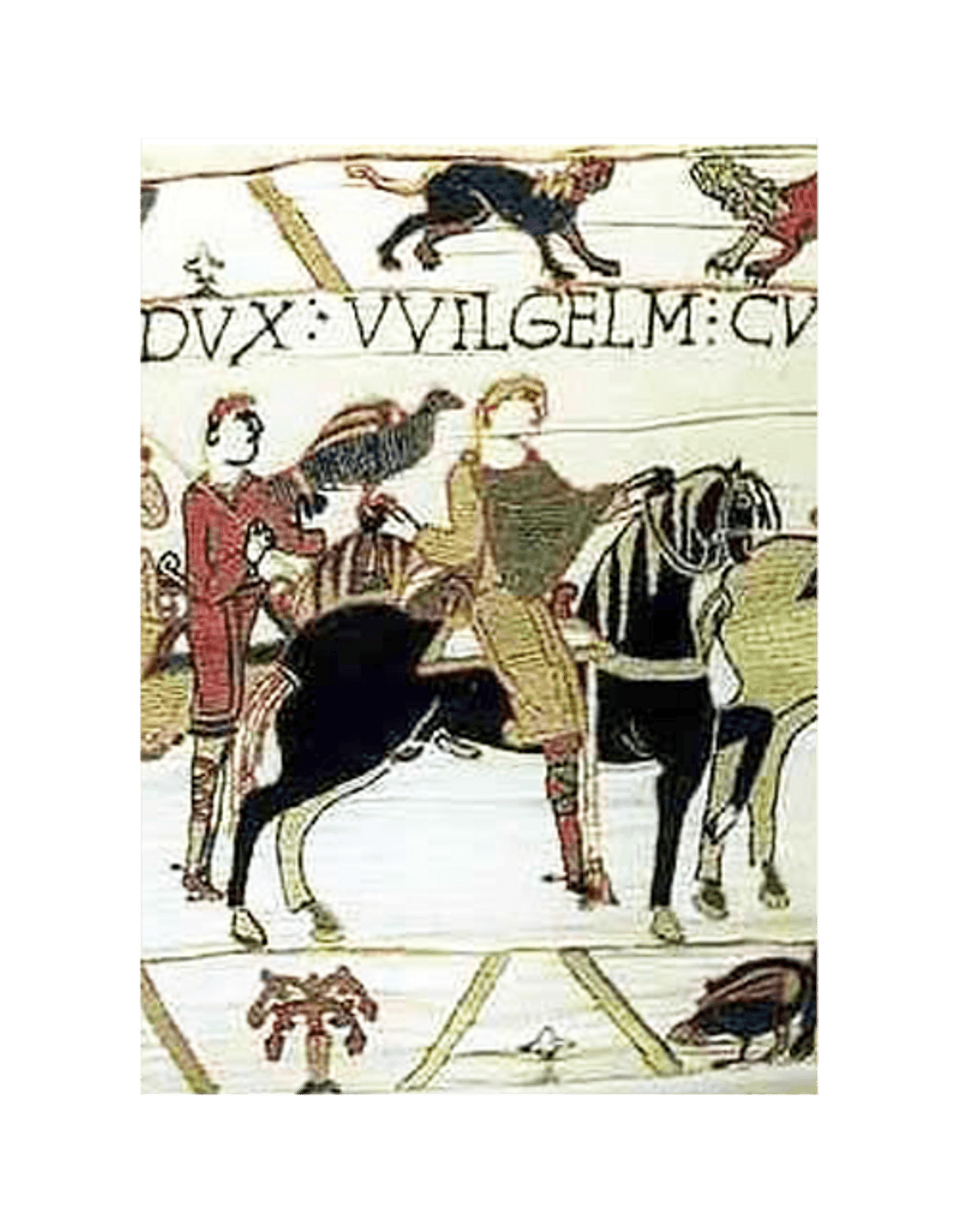
The Champagne region of France, where Rabbenu Tam resided, was a medieval center of falconry, where its practice has continued without interruption until the present day. Soon we will hear more from Rabbenu Tam’s student, Rabbenu Ephraim of Regensburg, and also from Rabbi Isaac of Norwich, a prominent member of the Jewish community of Rabbenu Tam’s disciples in England, a community which was probably brought to England from Northern France along with William the Conqueror and the Normans.
Rabbi Zerachya Ha-Levi, a prominent sage of Provence who was profoundly influenced by Rabbenu Tam, also weighs in on the topics of hawks and falconry. The paths of transmission of the teachings of Rabbenu Tam described by Reiner lead to the very locations in which we find evidence or discussion of Jewish hawking.
According to Israel Ta-Shma:
R. Tam lived in Ramerupt where he engaged in moneylending and viticulture, typical occupations of the Jews there at that time, and became well-to-do. His business affairs brought him into contact with the nobility and the authorities, who occasioned him much trouble. To a great extent his attitude toward non-Jews in various halakhic questions was conditioned by his direct contact with them ...
Falconry and hawking are considered sports of the nobility and the affluent. The activity seems out of place for the Jewry of a highly differentiated medieval society, with Jews excluded from many trades and certain aspects of the surrounding social life which falconry and hawking seem to represent. Therefore, Rabbenu Tam’s personal affluence is a strong mitigating factor against this potential objection to the possibility of medieval Ashkenazi Jews having engaged in hawking.
According to Norman Golb, “Jacob Tam’s correspondence actually indicated that he was in the service of the crown, apparently as chief counselor responsible for royal policy towards the Jews of Champagne.” Golb proceeds to cite medieval sources, which report that Rabbenu Tam was “a man of great wealth and beloved in the king’s court.” He was “[often] present in the palace of the King of France, who had great affection for him.” This probably refers to King Louis VII, whose wife Eleanor was also an avid hawker. Golb suggests that some of Rabbenu Tam’s writings surreptitiously refer to the powerful Count Theobald the Great, who once warred against Louis VII and prevailed.
A similar or even greater level of affluence may be found as well in the personage of Isaac of Norwich, to whom the practice of hawking is more reliably attributed, as discussed above. Isaac can probably be identified in the following passage as one of the wealthiest and most powerful members of medieval Anglican Jewry. As noted above, the rabbinic leadership of the entire Anglican Jewish community during that period should be viewed as consisting of disciples of the school of Rabbenu Tam.
One of the earliest known anti-Semitic caricatures, dating to 1233, was directed primarily against Isaac of Norwich:

The precise intention of this caricature is not clear and has been the topic of much scholarly discussion. At the top, Rabbi Isaac is portrayed as a three-headed Antichrist, a common motif in French Medieval Christian art, such as Bible Moralisée.
Isaac had extensive business dealings with the upper strata of Anglican society, primarily through money lending. Along with many other prominent Jews, he was probably imprisoned for an extended period sometime between 1210 and 1213. Isaac had to personally pay a mark a day for a thousand days in order to escape capital punishment, which others less fortunate indeed suffered. For example, Moshe Mokke, portrayed on the left in the caricature with the pointy Jewish hat, an associate of Rabbi Isaac, was later executed. The BBC News, on June 23, 2011, reported that DNA and other tests performed on 17 bodies found at the bottom of a Norwich well, mostly children, were probably Ashkenazi Jewish victims of a mass murder committed in the 12th or 13th centuries.
King John, during whose reign Isaac lived, was himself a legendarily avid falconer, who in 1208 reserved falconry exclusively to the crown, though his aggressiveness was curtailed by the Forest Charter of 1217 which confirmed the right of every freeman to “the eyries in his woods.” The nuns of Carrow, Norfolk (so close to Norwich that today it is considered a central part of modern Norwich, just a half-mile from the castle walls) offered King John a sparrow hawk in return for having a phrase in their charter altered. Falconry and hawking are popularly practiced in the Norwich region to this day.
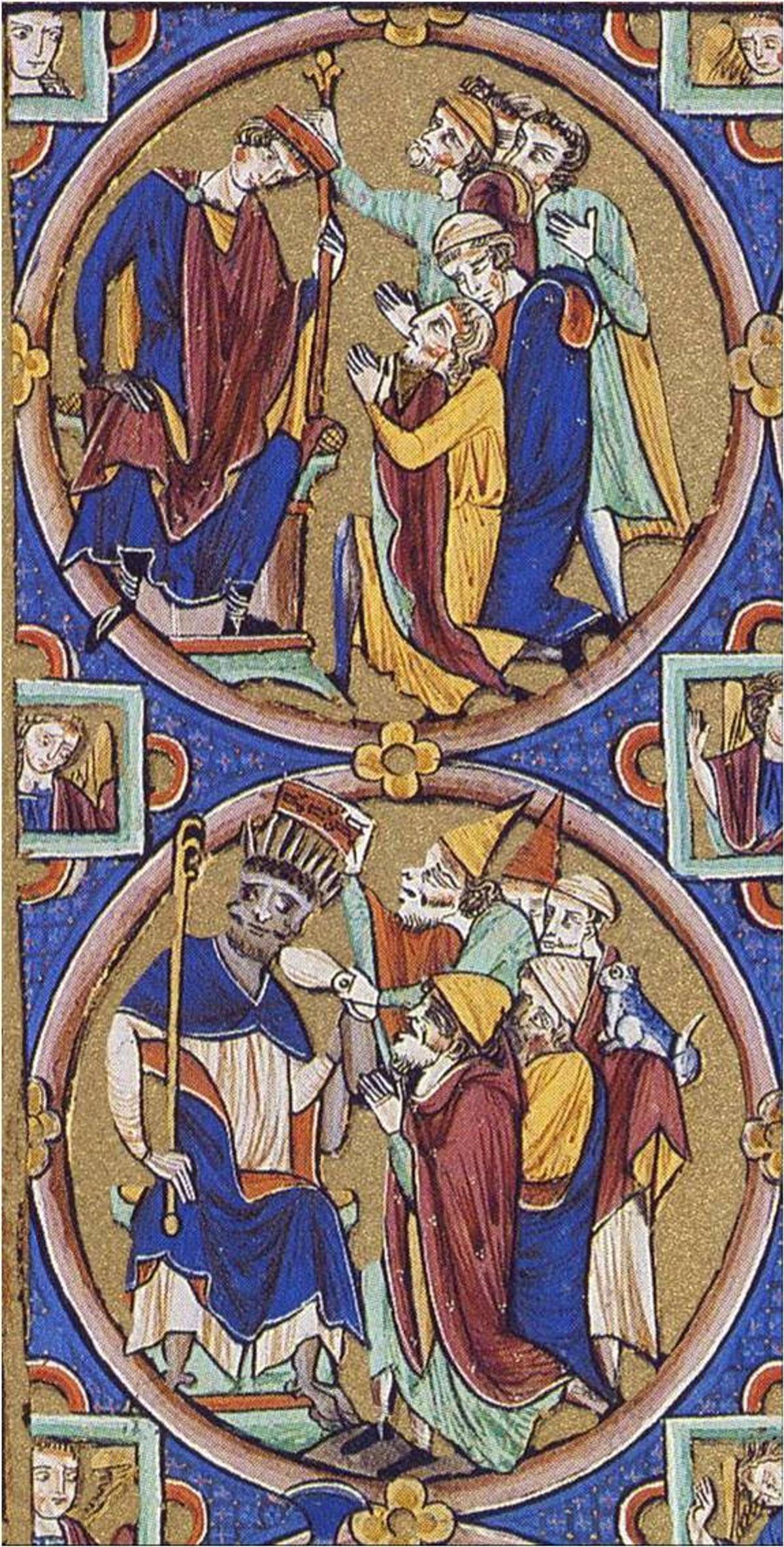
It therefore seems likely that Rabbi Isaac of Norwich’s personal practice of using silver talon covers was later ascribed to the more prominent Rabbenu Tam.
I would like to conclude this section with a methodological anecdote. An earlier version of this paper accepted the attribution to Rabbenu Tam as likely historical fact. At the time, I was rebuked by a rabbinic acquaintance. How could the great Torah sage, Rabbenu Tam, have whittled away precious hours on such a frivolous sport? He must have been engaged in learning Torah day and night! After reluctantly and inconveniently reversing my position—not for his reasons, but on the basis of additional evidence presented in this paper, and of which I was previously unaware—I received an opposite rebuke from an academic scholar, actually a cousin of the rabbi. He accused me of apologetically refraining from casting Rabbenu Tam as being integrated with the secular culture of his time, as a hunter and inventor, embodying the spirit of “Torah and Derekh Eretz.” Indeed, when evaluating great historical figures, it is very difficult to be truly objective and prevent our own biases from clouding the historical gaze backward, on one side or the other.
A central thesis of this article is that the Jews of medieval France did indeed practice falconry (or to be specific, hawking), if only peripherally, and that the locus of this activity was in the French communities which happened to surround Rabbenu Tam. A similar conclusion has already been stated, virtually “divined,” by the great falconry historian, Hans Epstein, in a footnote (39) to his “Origin and Early History of Falconry.” The source for his conclusion is an interpretation found in several medieval commentaries on the Pentateuch, one of which attributes it to Rabbenu Tam himself. Here are Epstein’s words in full:
That the Jews adopted falconry from other people is borne out in another passage. In a Hebrew commentary on the Pentateuch, Hadar Zekenim, composed in France in the 12th century (see: Ginzberg: The legends of the Jews, I, 392)in its comment on Gen. XXXII, 14, Jacob is said to have presented Esau with “a bird called in French esparvier, which princes and knights carry on their hands.” The word esparvier (modern F. epervier; G. Sperber; sparrowhawk) is transliterated in Hebrew characters. The same comment is quoted in a MS commentary (cited in Kasher’s Torah Shelemah, ad. loc.) in the name of Rabbenu Tam, French, 1100-1171 A.D., as follows: “‘that which came to his hands,’ i.e. that which is customary for a man to bring in his hand, namely, a hawk etc. which kings and princes carry in their hands to hunt birds therewith.” Thus each age sees past history in the light of its own achievements!
While Epstein’s conclusion can be validated by other, more explicit evidence presented in this article, it seems a bit hasty to conclude from this commentary alone that some Jews did, in fact, practice falconry. Nevertheless, in retrospect, his logic is compelling. The willingness of a commentator or author to project an activity back to a mythic founder is a telling sign of its presence and acceptability in his own community.
In marked contrast, the Spanish sage, Rabbenu Bachya (or Bachye) ben Asher (1255–1340), a member of the famous rabbinic ibn Halawa family and a disciple of Rashba in Barcelona, cites this commentary, but interprets it in a surprising manner. The verse states: “That which came on/in his hand”: According to Rabbenu Bachya, “his hand” does not refer to the hand of Jacob, but to the hand of Esau! Only Esau, the gentile hunter, would carry a hawk on his hand, not Jacob, who dwells in Jewish tents of study. We may infer from this shift of his interpretation that hawking was neither practiced nor considered acceptable in the Sephardic community of Rabbenu Bahya. It seems safe to assume that Rabbenu Tam, however, in an environment where Jews did indeed practice hawking, did not have in mind the same interpretation as Rabbenu Bahya. Hence, he felt no compunction in the hawk befitting equally well to Jacob’s hand.
Even if he did not practice the sport, why was Rabbenu Tam associated with it by later generations in Spain?
In his Sefer Ha-Yashar, Rabbenu Tam constructs a radically new approach to the rather controversial issue of determining which types of fowl are kosher for consumption and which are not. In the course of his long and complicated discussion in determining which type of fowl are kosher for consumption (which I refer to as Torat Ha-of) he claims firsthand knowledge of behaviors of the hawk and the falcon. I’ve translated only the end of the long exposition, some of which—but not the section crucial to our discussion—is cited by Tosafot (bHullin 62a):
I do not agree with the ruling of Rabbenu Shlomo [Rashi] regarding [the matter of] trampling. Furthermore, the word trampling is not defined [in this context] as he explained it [that the bird stands on its food with its legs to hold it in place as it eats]. The custom of the birds which are [categorized as] tramplers can be clarified through observing the hawk (aushtveir=astor) and the falcon, as they are referred to in the vernacular, who trample and [simultaneously begin to] eat [their prey] alive. According to its [correct] interpretation, the biblical netz is not the hawk or the falcon, for it [the netz] is among the 21 birds listed [in Leviticus 11 and Deuteronomy 14] who are not tramplers, as I have explained [previously]. Furthermore, we see that they [the hawk and the falcon] trample and eat [their prey alive], as I have explained. In truth, neither can they be a type of [the biblical] nesher [prob. vulture], for they have an extra “toe.” Rather, one should say that the hawk and the falcon are types of [the biblical] orev, like the white senunit according to Rabbi Eliezer and [the] zarzir, which are also types of orev. In contrast, the biblical netz does not trample [and eat] ... However, do not be astonished at how [many people] commonly refer to the [biblical] netzas “hawk,” for they have [merely] become accustomed to their error. Similarly, they commonly refer to the [biblical] nesher as “eagle,” but that is not so, for it has an extra “toe” and the nesher does not. Likewise, they identify the [biblical] qora as cuckoo, but that is not so, for if it were true, it would be permitted ... This is how I understand these teachings, not like the [traditional] interpretation of Rabbenu Hananel or that of Rabbenu Shlomo.
In this text, Rabbenu Tam proclaims his firsthand knowledge of the hawk and the falcon, and demonstrates it well. Indeed, as he states, their prey will often be consumed alive, especially in the case of the hawk, which kills more slowly with its talons, whereas the falcon kills quickly by severing the spinal cord with a special notch in its beak. Andrew Knowles-Brown, an English falconer and hawk breeder, relates that even in most cases where the prey has already been dispatched, it may keep flapping for up to two additional minutes while the predatory bird is plucking and feeding, and this certainly would appear as if the predator is eating the prey alive.
To my knowledge, the above text from Sefer Ha-Yashar represents the first appearance of the Latin term falcon in a Hebrew manuscript. Rabbenu Tam, while not distinguishing between the characteristics of the hawk and the falcon, clearly differentiates between the two distinct species by going out of his way to mention both. This is in itself quite notable, because miniatures and texts from this period in which this distinction is possible are relatively rare. As late as 1943, Hans Epstein wrote that “it is impossible to distinguish between the accipitrinae and falconinae in either literary or pictorial evidence before the 13th century,” and here Rabbenu Tam is writing in the middle of the 12th century and deliberately distinguishing between them, even if only in name.
Rabbenu Tam employed his firsthand knowledge of birds of prey to boldly craft here a novel approach to identifying permitted and forbidden birds, one that would be considered absolutely authoritative by Ashkenazi authorities for the next 500 years. It is the first explicit expression of a blanket prohibition on the consumption of birds of prey (although it may be argued that this was long implicit in the ancient Mishna), a point taken for granted by observant Jews today, thanks in part to this ruling by Rabbenu Tam.
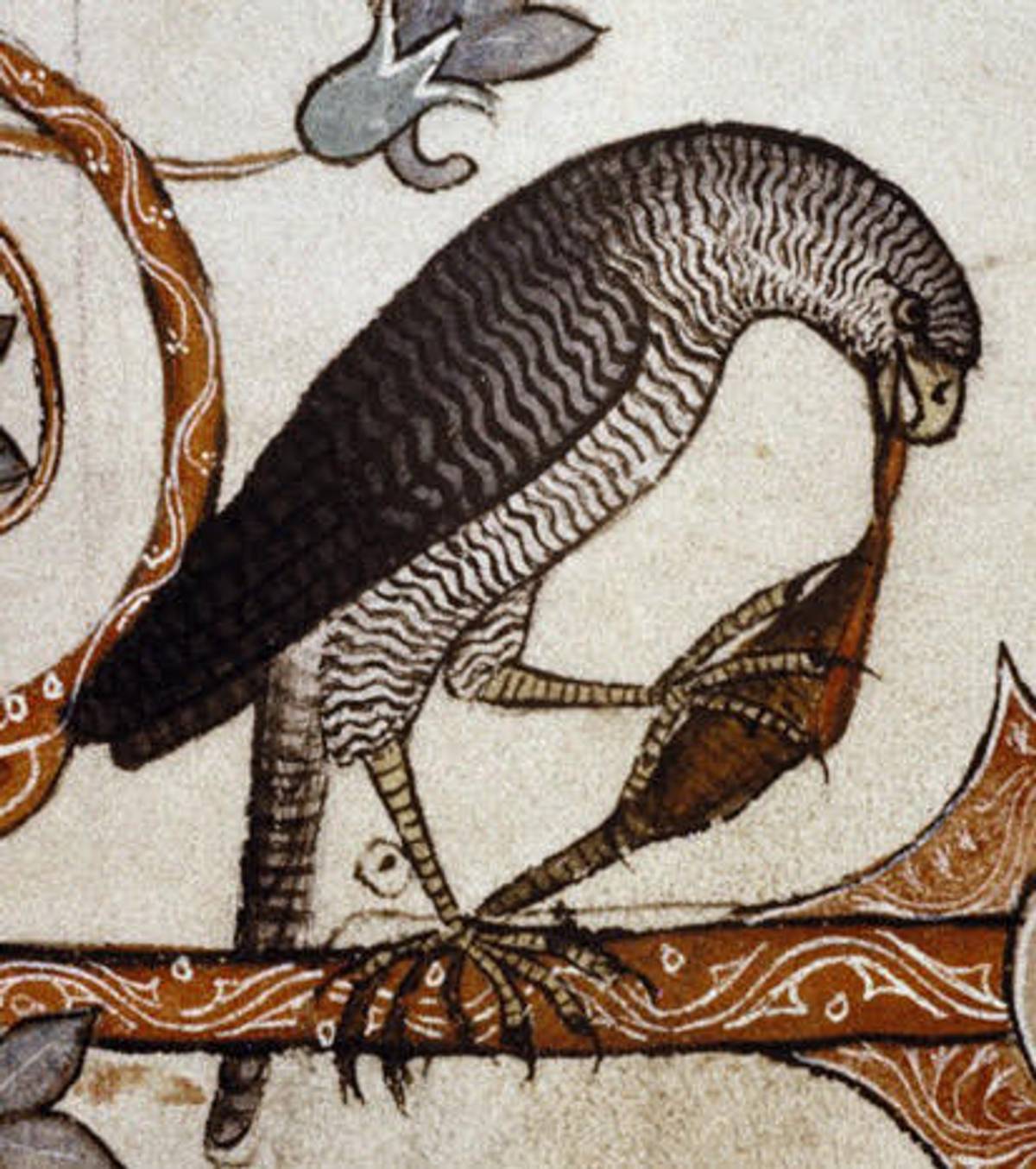
Although it seems unlikely that medieval Jews would have consumed birds of prey even in the absence of Rabbenu Tam’s decision, the possibility cannot be discounted entirely, for we have before us one of the most complex and confusing sections found anywhere in Jewish law. One could imagine an alternate legal stance developing in the absence of Rabbenu Tam, perhaps based on the interpretation of Rashi, and possibly permitting the consumption of birds of prey. The words of one of the leading rabbis in southern France, Rabbenu Menachem ben Shlomo Meiri (1249-1315), regarding this law, prove most illustrative: “You must know that this Mishna, its interpretation, and the matters resulting from it have become very confused (mevulbalim) by the commentators; and the legal decisions change as the interpretations vary.”
A story which has repeated itself throughout Jewish history up to the present day, is that of Jews arriving in some new land, or species being introduced from afar, and the Jews, unfamiliar with it, cannot decide clearly whether it is kosher or not. Differing opinions result in much internal conflict, such as has occurred recently regarding the South American zebu, whose meat is prepared in a kosher manner and shipped worldwide to many, but not all, Jewish communities. The proper approach to this issue is an additional topic addressed by Rabbenu Tam here in this chapter of Sefer Ha-Yashar, where he fundamentally disagrees with Rashi. According to Rashi, if we have no existing tradition, and there is any doubt whatsoever regarding any of the criteria, we must disqualify the animal for consumption. Rabbenu Tam disagrees, and believes that the proper approach is to follow to the best of our ability the general principles laid forth in the Talmud (as understood by Rabbenu Tam here) even though they themselves are not entirely clear to us.
A controversy arose in France during the generation following Rabbenu Tam, regarding the permissibility of the pheasant, which may have been introduced to Northern France from its native Eastern Asian lands. According to Zohar Amar, a leading expert on flora and fauna in Hebrew sources, it is identified explicitly in the Babylonian Talmud as pheasioni, but the traditional identification was lost and forgotten in Europe due to its being relatively rare and expensive. In any case, the Jews of France were not familiar with the pheasant and there were those who sought to forbid its consumption. The matter was eventually brought to Rabbenu Isaac ben Shmuel, Ri, the nephew of Rabbenu Tam and his successor as the supreme arbiter of Jewish law. Based on his personal examination of the bird according to the principles his uncle Rabbenu Tam outlines in this text, he permitted it. This decision was considered authoritative and was recorded in subsequent works of Jewish law, and it is considered binding to this day. Had the pheasant been introduced several hundred years later, it would very likely have been forbidden, as later legal authorities tended to lean more to the position of Rashi regarding this matter.
A principal means of obtaining pheasant in Northern France in the 12th century was through hawking. As such, pheasants would likely have been quarry for many of French Jewry’s hawking expeditions, which quite likely triggered the inquiry that resulted in the examination undertaken by Rabbenu Isaac. It should be noted, however, that other forms of trapping, such as with nets, were also widely employed.
An earlier Provencal sage, R. Zerachyah Ha-Levi (ca. 1130-ca. 1186) was the author of a controversial Talmud commentary and critique on the Alfasi entitled Ba’al Ha-Maor. Highly influenced by the contemporaneous (yet older) Rabbenu Tam and his school, his aggressive and original approach was severely criticized with much vitriol by his Provencal rival Ra’avad and in much extensive depth by the Spanish Ramban (Nahmanides) in his Milhamot Hashem, “Wars of the Lord.” In contrast, R. Zerachyah’s comments are generally quite brief and succinct. Here however, he graces us with one of his most extensive discussions, spanning half a column of extremely fine print in the standard Vilna edition. He describes in detail three fundamentally different approaches to the topic: the traditional one, the Provencal and novel one, and the third, this one of Rabbenu Tam, whose text in Sepher Ha-Yashar he quotes in its entirety. He concludes that while any of the approaches provides a satisfactory interpretation, that of Rabbenu Jacob Tam is the one that should be followed in practice.
According to R. Zerachyah, the greatest difficulty in Rabbenu Tam’s interpretation is his labeling of the hawk and falcon as types of the biblical orev. The difficulty is not anatomical, but etymological: A regnant interpretation of the time, found explicitly in manuscripts of the Tosafists, is that orev refers to “blackness,” the color of the raven or crow, signifying “evening,” erev, when the skies turn black. Furthermore, we find in Canticles 5:11 “black as an orev.” In contrast, Rabbenu Tam identifies the hawk and the falcon, which are generally not black, as types of orev, posing a difficulty.
R. Zerachyah resolves the difficulty in Rabbenu Tam’s approach with an incredible etymological twist: Orev is not related to erev as in “evening,” but rather to erev as in erev rav, “mixed multitude” (Exodous 12, 38), with orev meaning mixed. R. Zerachyah explains that hawks and falcons are considered “mixed” by Rabbenu Tam because orev is, “the type [of bird] that mixes with man in that it flies to his hand.” It is doubtful that this was the intention of Rabbenu Tam himself, but given R. Zerachyah’s intimacy with his approach, and the geographic and temporal proximity, as he outlived Rabbenu Tam only by about 15 years, it remains a remote possibility. In light of the highly original and remarkably similar biblical interpretation attributed to Rabbenu Tam himself, one can imagine that this etymology might have been what Rabbenu Tam himself had had in mind.
[1] The houbara is similar to a small ostrich. Although not permitted under Jewish dietary law, this bird is widely consumed by Muslim falconers, for whom falconry is explicitly permitted in the Quran: “They will ask you what else is made lawful for them. Say: Those things which are fitting to eat are lawful for you, and the prey of those animals and birds of the chase which you have trained. Eat of what they catch for you and make mention of God’s name over it, and fear God: God is swift to reckon.” Quran, chapter 5, Surah Al Ma’aida (Revelation of the Table), Verse No. 4. Allen, Mark, Falconry in Arabia, London, 1980, title plates and introductory pages. Quran quotation adapted from there and by the author from the Hebrew translation of Aharon Ben-Shemesh, Tel Aviv, 1978. The throat must be slit simultaneous to a verbal sanctification of the holy name. Apparently, at least some Muslim sects allow this slit to be performed even after the trained predator has dispatched the prey, as Dr. Nick Fox reported in a communication dated June 10, 2011. Also see: Shlegel, Hermann, The World of Falconry: completed by a study of falconry in the Arab world, New York, 1979.
[2] Manuel Diego Pareja-Obregon, Goshawk: God Made You Eternal. Huelva: Cartaya, 2007, p.177. I thank David Horobin for providing this reference. Pareja-Obregon also writes of a historic use of the goshawk, which, with the points of the talons filed off to prevent injury, would capture cranes and herons for use in the training of falcons to take large prey. A similar process was observed by Alan Taylor of eaglefalconer.com, who wrote in a private communication on June 13, 2011, that he had repeatedly observed Chinese peasants flying “Tuhu” falcons at hares. The falcons “had their talons blunted and the point of their upper mandible removed to the notch ... they did often take the hare alive to be used again as a released quarry for a novice falcon.
[3] In an initial query to falconers on June 8, 2011, before becoming aware of this source, this author asked, paraphrasing the practice of Rabbenu Tam: “Would silver ‘thimbles’ ever be placed on the talons of a hawk (astor)?” “Thimbles” is the exact term used by Pareja-Obregon.
An earlier version of this article appeared in Oqimta, vol. 1 (2013), and is adapted with permission.
Dr. Leor Jacobi is a Post-Doctoral Research Fellow at Bar-Ilan University whose interdisciplinary research interests range across Rabbinic Literature and Medieval Art. Leor is currently the recipient of a Humboldt Stiftung Fellowship at University of Mainz, Germany, researching manuscript fragments extracted from Medieval bookbindings in Girona, Catalonia.